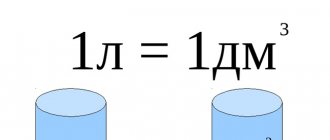Legal entities carrying out economic activities are obliged to timely and fully fulfill their obligations to the state budget, including payment of property taxes.
In 2020, there were some changes in the rules for its calculation. What changes have occurred in the tax base, who is recognized as a taxpayer in this case, how the rates for enterprises have changed, what benefits exist for the payment of this type of mandatory payments and the deadlines for their payment will be discussed in today’s article. In addition, using a specific example, we will try to consider how this type of mandatory payment and the advance amount for it are calculated.
Changes in the tax base in 2020
In the previous year, movable assets accepted by the company on its balance sheet after January 1, 2013 were not subject to taxation. This rule did not apply to assets that the company received from a so-called dependent counterparty. This exception was introduced in order to eliminate cases of artificially lowering the amount payable to the budget through the transfer of assets between friendly companies. This provision ceased to apply on January 1 of that year.
Now, according to Federal Law No. 335-FZ of November 27, 2017 “On Amendments to Parts One and Two of the Tax Code of the Russian Federation,” movable assets of enterprises again began to be included in the taxable base.
In addition, in accordance with the new edition of Article 380 of the said code and Article 381.1. benefits applicable to company assets included in depreciation groups 3-10 no longer apply. However, in relation to assets designated in paragraph 25 of Article 381 of the main fiscal document of Russia, from the date of issue of which no more than 3 years have elapsed, as well as assets that are classified as innovative highly efficient equipment, additional benefits may be applied up to the complete exemption of the company from payment of the designated type of obligatory payments to the budget.
Who are the payers?
According to Article 373 of Chapter 30 of the main fiscal document of the country, which is part of the second document signed by the President of the Russian Federation on August 5, 2000 and which entered into force on January 1, 2001, taxpayers of this type of obligatory payment are recognized as enterprises that own capital recognized as an object of taxation according to Article 374 of the country's main fiscal document.
At the same time, enterprises that have switched to a simplified taxation system and own certain assets are recognized as payers.
Also, some property of companies paying unified agricultural taxes is subject to taxation.
At the same time, the objects of taxation for national companies in accordance with the Tax Code are movable and immovable property, which is recorded on the balance sheet as an asset in accordance with the current accounting procedure.
As for foreign organizations operating on the territory of the Russian state through permanent representative offices, the object of taxation for them is movable and immovable property, which is classified as a fixed asset, as well as property transferred under a concession agreement.
For foreign organizations that do not operate through permanent representative offices in the Russian Federation, the tax base includes real estate owned by these companies and located on Russian territory, as well as real estate received under a concession agreement.
The tax base does not include:
- land plots and environmental management facilities;
- cultural heritage sites;
- nuclear installations used for scientific research;
- icebreakers, as well as nuclear technology service vessels;
- space objects;
- vessels registered in the Russian International Register of Ships;
- property included in 1-2 depreciation groups.
What is it charged for?
When calculating tax, many individual company parameters are taken into account. Not only the industry of activity matters, but also the form of ownership and the size of the authorized capital. Thus, some parameters determine not only the application of the property tax rate, but also the objects of taxation themselves. For example, for domestic companies, the object of taxation is all types of movable and immovable property included in the list of fixed assets. This does not take into account their origin and right of ownership, since leased property also belongs to the fixed assets.
For enterprises with foreign participation, the procedure is slightly different. If a company operates through an official representative office, then all property received on the basis of a concession agreement is taxed.
Quarterly calculations and an annual declaration are submitted as reporting. Quarterly reports are submitted within the next month, and declarations are submitted within 3 months after the end of the year.
Similar articles
- Property tax on an unfinished construction project
- Property tax - rate 2018
- Calculation of property tax for organizations
- Property tax benefit - code 2010257
- Organizational property tax
Changes in rates
As for the current rates for this type of payment in 2020, the maximum rate for movable property tax does not exceed 1.1%.
In 2020, organizations operating under a simplified taxation system are also exempt from this type of obligation to the state budget. For them, only real estate that has a cadastral value at the beginning of the reporting period acts as an object of taxation.
In relation to other business entities that are owners of movable property, taxes are calculated in accordance with regional legislation.
The table below shows the maximum rates provided for by the Tax Code of the Russian Federation:
| Type of property | Maximum rate, according to the Tax Code of the Russian Federation |
| by types of property not included in one of the items listed below | 2.2 percent |
| according to the cadastral value of real estate in Moscow | 1.4 percent |
| according to the cadastral value of real estate for all subjects of the Russian Federation, with the exception of Moscow | 2 percent |
| types of property designated by the Decree of the Government of the Russian Federation dated September 30. 2004 No. 504. When calculating tax on objects put into operation after December 30. 2020, you can use reduction factors. | 1.0 percent |
| along main pipelines, power transmission lines, as well as structures that are an integral part of the facilities listed below | 1.6 percent |
| on objects of main gas pipelines, gas production, production and storage of helium; | exemption from payment |
| for objects, a specific list of which was approved by order of the Government of the Russian Federation dated 19.10. 2020 No. 2188-r. When calculating tax for 2020, be guided by the list specified in paragraph 3 of clause 1 of the order. | exemption from payment |
Commercial real estate tax from 2020
This article will answer the following questions:
- what real estate is considered commercial;
- what changes related to commercial real estate tax occurred in January 2020.
What is commercial real estate
Commercial is real estate that is not residential or summer cottage, and is not a personal plot of land or a garage. Although an apartment or house can be considered commercial, provided that it is rented out. In general, the purpose of such real estate is to make a profit.
Commercial real estate includes:
- catering canteens;
- cafes, bars and restaurants;
- production workshops;
- shopping and entertainment complexes;
- administrative and office premises.
- industrial (warehouses, hangars, workshops and other industrial facilities);
- social (medical centers, libraries, airports and others like them);
- residential premises for rent;
- buildings and premises for free use.
Such real estate can be divided by type:
Commercial real estate is a taxable property. Its owner calculates and pays tax. Payment terms are determined by regional authorities.
Previously, the tax on commercial real estate was calculated based on its average annual value. Then calculations for some objects began to be carried out according to cadastral value. Now the following should be calculated:
- shopping complexes and administrative premises with an area exceeding 3000 m²;
- real estate of organizations or individual entrepreneurs located outside the Russian Federation;
- office rooms;
- catering premises with a hall area exceeding 150 m²;
- residential premises, garages, parking spaces, unfinished construction projects, as well as residential buildings, garden houses, outbuildings or structures located on land plots provided for private farming, vegetable gardening, horticulture or individual housing construction.
The premises listed in the last paragraph were introduced by the new law.
Changes in 2020
On January 1, 2020, Law No. 379-FZ came into force, which makes changes to the procedure for calculating property tax. In particular, the changes affected paragraphs. 4 paragraphs 1 art. 378.2 Tax Code of the Russian Federation.
Previously, changes should have been made to paragraph 70 of Art. 2 of Law N 325-FZ. The text of the changes sounded like this:
“Other real estate objects recognized as objects of taxation in accordance with Chapter 32 of this Code, not provided for in subparagraphs 1 - 3 of this paragraph.”
That is, if the cadastral value of the property is determined, then it is the “cadastral” tax on the property of organizations that must be paid, regardless of the average annual value, address and presence in the regional list. Based on the concept of “other real estate”, we can conclude that all commercial real estate of organizations should be included in the cadastral value calculation.
How to calculate the tax amount
The full amount of tax at the cadastral value is determined by the following formula:
TnI = Tax base × Tax rate
The amount of advance payments is calculated using the following formula:
AP = Tax base × ¼ × Tax rate
For example, the cadastral value of a real estate property is 20 million rubles. The tax rate is 1.5%. Then:
- annual tax amount - 300,000 rubles (20,000,000 × 1.5%);
- advance payments for the first quarter, half a year and 9 months will be equal to 75,000 rubles (20,000,000 × ¼ × 1.5%);
- the amount of tax payable at the end of the year is 37,500 rubles (300,000 – 3 × 37,500).
If ownership arose or ceased during the reporting period, then the amount of tax is determined based on the number of full months of ownership.
Formula for calculating advance payments:
AP = Tax base × ¼ × Tax rate × Number of full months of ownership of the property in the reporting period/3.
Formula for calculating the total tax amount for the year:
NnI = Tax base × Tax rate / Number of full months of ownership of the property in a year / 12.
The wording introduced by paragraph 70 of Art. 2 of Law N 325-FZ, did not provide a clear definition and raised many questions. For this reason, changes introduced specifically to paragraph 2 of Art. 1 of Law N 379-FZ. Thus, the list of property, the tax base of which is determined as the cadastral value, was supplemented with specific examples.
Sergey Sakun
writer
November 27, 2019
28208
Comments for the
Cackl e
Was the article helpful?
14% of readers find the article useful
Thanks for your feedback!
Example of calculating property tax for legal entities and advance payments
We can consider how enterprises and organizations calculate the amount of such obligations to the state budget using a specific example.
Before you begin the calculation, you should decide which property on the organization’s balance sheet is subject to taxation.
Then you should decide whether the company has the right to preferential taxation.
Only after this can you begin to determine the basis for calculating the amount of obligations to the budget, decide on tax rates and calculate the amount.
As for advance payments, they should be paid quarterly. To calculate them, the following formula is used:
- in case of calculation based on the average annual cost = (average cost of fixed assets for the reporting period x tax rate)/4;
- in case of calculation based on cadastral value = (cadastral value of fixed assets x tax rate)/4.
Let us consider in more detail how to calculate the amount of tax on fixed assets of organizations based on the average annual cost.
To determine the tax base in this case, it is necessary to add up the residual value of each property on the 1st day of each month and at the end of the reporting period (in Russian rubles):
- 01. – 120 000;
- 02. – 115 000;
- 03. – 110 000;
- 04. – 105 000;
- 05. – 100 000;
- 06. – 95 000;
- 07. – 90 000;
- 08. – 85 000;
- 09. – 80 000;
- 10. – 75 000;
- 11. – 70 000;
- 12. – 65 000;
- 12. – 60 000.
We calculate the advance tax amount for the 1st quarter of the reporting period:
- tax base = (120,000+115,000+110,000+105,000)/4 = 112,500 rubles;
- advance payment amount = 112,500 x 2.2% = 2,475 rubles.
Then you need to determine the advance amount as of July 1:
- tax base = (120,000 + 115,000 + 110,000 + …+ 90,000)/7 = 105,000 rubles;
- advance payment = 105,000 x 2.2% = 2,310 rubles.
Now you need to determine the amount of the advance payment based on the results of the 3rd quarter:
- tax base for calculation = (120,000 + 115,000 + 110,000 + …+ 75,000)/10 = 97,500 rubles;
- advance payment = 97,500 x 2.2% = 2,145 rubles.
After this, the amount subject to additional payment of property tax for the year is calculated:
- tax base for calculation = (120,000 + 115,000 + 110,000 + …+ 60,000)/13 = 90,000 rubles;
- advance payment = 90,000 x 2.2% = 1,980 rubles.
Who pays property tax
Property tax is mandatory for all property owners.
This is a regional contribution, therefore the final rate of property tax for organizations is regulated by the authorities of the constituent entities of the Russian Federation (clause 1 of Article 372 of the Tax Code of the Russian Federation). Regional legislators determine not only tariffs, but also the timing of payment. Users of special taxation regimes (USN, UTII, Unified Agricultural Tax) pay contributions on property assessed at cadastral value. Organizations on OSNO transfer fees from all property taxable objects. There are those who do not pay property taxes. These are representatives of UEFA (European Football Association) and its subsidiaries; the grace period for them is limited to 12/31/2020. Confederations and national football associations are exempt from contributions for the entire period of preparation and holding of the Russian part of the European Football Championship.
Tax benefits
In accordance with Article 381 of Part 2 of the Tax Code, introduced by Federal Law No. 139-FZ of November 11, 2003, the following are exempt from payment:
- institutions and organizations working in the penal system, in relation to those fixed assets that are used to perform the functions assigned to them;
- religious organizations in terms of property used for religious activities;
- national public organizations of people with disabilities, among whose members at least 80% are people with disabilities and their representatives, in terms of fixed assets used to carry out their statutory activities;
- organizations engaged in the production of pharmaceutical products, in terms of fixed assets used for the production of veterinary immunobiological agents aimed at combating the epidemic;
- material objects of enterprises engaged in the production of prosthetic and orthopedic products, etc.
This article of the Tax Code of the Russian Federation contains 26 points indicating enterprises and organizations exempt from paying this type of mandatory payments.
Payment period
According to Article 383 of the Tax Code of the Russian Federation, the amount of the designated type of mandatory payments and the amount of advance payments for it are subject to payment in the manner and within the time limits established by the laws of the constituent entities of the Russian Federation.
During the reporting period, taxpayers must pay advance payments to the budget, unless otherwise provided by the legislation of the constituent entities of the Russian Federation. At the end of the reporting period, an additional payment for this tax is made for the year.
Taxpayers are required to submit calculations for the specified tax within a maximum of 30 calendar days after the end of the relevant reporting period.
As for tax returns based on the results of the reporting year, taxpayers are required to submit them no later than March 30 of the year following the expired fiscal period.











